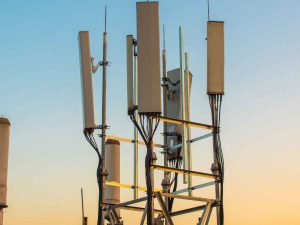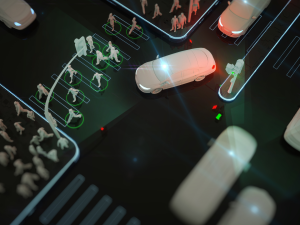5G Network Architecture with Core Network Planning and Security

Course Overview
This course provides an in-depth exploration of 5G Network Architecture, focusing on core network planning and security to meet the demands of ultra-fast, low-latency, and scalable mobile networks. Participants will learn about Service-Based Architecture (SBA), cloud native core, and flexible and distributed core, which enable agile and efficient network functions.
Key topics include network slicing, Standalone (SA) 5G Core, deployment options, and Control and User Plane Separation (CUPS), which optimize traffic management and resource allocation. The course also covers Multi-access Edge Computing (MEC) for low-latency applications like autonomous driving, IoT, and smart cities.
Security is a major focus, with deep dives into the security trust model, AKA (Authentication and Key Agreement), SEPP (Security Edge Protection Proxy), and identity management using SUPI, SUCI and GPSI. Participants will also explore Packet Forwarding Control Protocol (PFCP) and distributed flexible architecture, ensuring robust and secure 5G network deployments.
By the end of the course, attendees will have a strong foundation in 5G architecture, security, and planning, equipping them to implement and manage next-generation mobile networks effectively.
Target Audience
- IT & Telecommunications Engineers
- Telecom Infrastructure Security Professionals working in Mobile Operator, Policy Regulator, or IT infrastructure Provider bodies
- Professionals who wish to extend their skills and knowledge in the 5G system infrastructure
Duration & Training Format
- Classroom: 5 days
- LIVE Virtual: 35 hours
*Note:
- A minimum of 8 or more participants is required for a Classroom session to commence.
- A minimum of 6 or more participants is required for a LIVE Virtual session to commence.
- LIVE Virtual courses can be conducted for 5 hours or 7 hours daily. Please note that the number of training days will be extended if you opt for 5 hours daily.
Upcoming Course Dates
- 30 Jun – 4 Jul 2025 (Mon – Fri), GMT +8
- 4 – 8 Aug 2025 (Mon – Fri), GMT +8
- 10 – 14 Nov 2025 (Mon – Fri), GMT +8
If you are keen on attending the above scheduled courses, please register your interest via our course enquiry form.
Course Objectives
This course aims to provide participants with deep technical skills for planning and performing 5G network design. At the end of this course, participants will be able to:
- Describe what is 5G
- Describe the 5G technology drivers
- List the 5G features and their benefits
- Describe the 5G network architecture and its key technologies
- Illustrate the 5G architecture and components both Core, RAN and Services
- Explain the Core network operation of 5G and the functionality of related nodes
- Describe typical 5G Use Cases and deployment scenarios
- Describe the conditions necessary to support 5G deployments
- Describe and design the IT infrastructure environment of 5G
- Describe the virtual network functions and the software-based architecture of 5G
- Describe and be able to assess the security risk of 5G
- Ability to create cybersecurity policies for multiple layers of the 5G infrastructure
Key Benefits
Upon completion of the course, participants will be proficient in the knowledge of 5G system infrastructure both from the traditional telecom point of view but also the IT system perspective. They will be able to plan and design a best-in-class Software-Defined 5G network infrastructure that offers leading-edge applications that would satisfy both current and future market requirements.
Course Outline
- 5G Introduction
- The Way to 5G
- New Services Proposed
- ITU 5G Use Cases
- 5G Assumptions and Technical Expectations
- Critical MTC: Communications Distance vs. Latency
- Summary of 5G Technology Capabilities
- The Evolution of 5G
- What are Small Cells in 5G Technology?
- IMT 2020
- 5G Performance Requirements
- Capacity Increase
- 5G New Spectrum and Considerations
- Five Key Technology Components of 5G
- 5G Use Cases
- ITU Definitions and HL Use Cases
- eMBB
- Fixed Wireless Access
- Ultra-Reliable Low Latency Communications – Critical IoT
- mMTC – Massive IoT
- D2D
- C-V2X
- 5G System and Core Deep Dive
- Introduction to Service Based Architecture model for 5GC
- Introduction to the NG-RAN:
- gNB, N3IWF for WiFi, AMF, eNB, ng-eNB, ng-gNB
- Interfaces: Xn, N2, N3
- NR and E-UTRAN Dual Connectivity Options
- Architecture Options: gNB CU and DU, CU/DU Separation
- Introduction to 5G Core Network Functions
- AMF, SMF, UPF, UDR, UDM, AUSF, NEF, PCF, NSSF, NRF, SEPP, NWDAF
- Interfaces: N1, N4, N5, N6, N7, N8, N9, N10, N11, N12, N13, N14, N15, N35, N36, N37
- Non-Stand Alone (NSA) and Stand-Alone (SA) Options
- 5G Reference Interfaces (Roaming and Non-Roaming)
- Distributed and Flexible Architecture
- Mobile Edge Computing Architecture
- Distributed Cloud Edge Computing
- Connectivity to Non-3GPP
- User Plane Resources:
- Definition of PDU Sessions
- Signaling Flow for AF Selection, QoS Session and UE Context Creation
- Service Data Flows
- QoS Flows, Rules, Profiles
- SDF Templates
- Data Radio Bearers and N3 Tunnels
- SMF Control of UPF over N4 Interface
- Policy and Charging Control (PCC)
- Access and Mobility Handling
- QoS/QoE Handling for PDU Sessions
- Service Based Architecture (SBA)
- Technical Overview of SDN and SDN Architectures
- Technical Overview of ETSI NFV
- NFV Use Cases
- Service Chaining
- Management and Orchestration
- Telecom Software Architectures and Evolution
- Monolithic, Virtualized, Containerized, Function-based
- Definitions of
- Service Based Interfaces
- Network Function (NF)
- NF Service
- Service Producer
- Service Consumer
- NF Registration, Discovery and Selection Procedures
- SBI Protocols
- RESTful APIs
- HTTP, HTTP/2, JSON
- Zero Touch Service and Network Management
- Cognitive Autonomy
- 5G Service Exposure
- Mechanisms for External AFs to Control Access and QoS
- Role of Packet Flow Description Function (PFDF)
- User Plane Splitting: Multiple N6 Interfaces for Service-Aware Traffic Steering
- Network Exposure Function (NEF)
- Functionality
- Interactions between 5GC and 3P-NFs
- 5G NR – Flexible Frame Structure
- Physical Resource Block (PRB)
- Frequency Domain
- Time Domain
- PHY Layer – Frame Structure (Time Domain)
- DL:UL Frame Arrangements
- Subframe Types
- 5G Air Interface Physical Channels (Overview)
- DL Sweeping Subframes
- xPBCH – Physical Broadcast Channel
- SS/PBCH Block
- The Reference Signals
- 5G Air Interface Call Flow Examples (Overview)
- Initial Attach Procedure and Re-attach Procedure
- Connection Establishment Flow
- Uplink PDU Transfer Flow
- Set-up of a PDU Session
- Mobility Flows
- 5G Network Slicing
- Requirements Grouped by Category
- 5G Radio/Core Network Deployment Scenarios
- Standalone
- Non-Standalone
- Comparison of EPC and 5GCN
- NFV as a Tool to Implement Network slicing
- PFCP vs. OF (OpenFlow)
- Service Function Chaining (SFC)
- Identifiers of Network Slices: NSI ID, NSSAI, S-NSAAI
- GTP Tunnel and PDU Session Types
- Transport Network Slicing – System View
- 3GPP Network Slicing – E2E Service View
- Data-Driven Orchestration
- 5G Security
- 5G Security Drivers
- Non-Standardized Network Security Measures
- Elements of a 5G Security Architecture
- 5G Security Algorithms
- SDN Security
- NFV Security
- Major 5G Security Issues
- Network Slicing and Network Slice Isolation
- Status in 5G Security Standardization
- WBPLSec Model and Application in 5G
- SEAF / ARPF / SEPP
- Authentication Protocols and Key Agreement
- AV Generation: Kausf, XRES, AUTN, RAND
- 5G AKA
- Key Derivation at the AMF
- Device Authentication
- 5G HE AV, 5G SE AV, HXRES*, HRES*, Kseaf
- Security Procedures
- Key Distribution in 5G & Key Hierarchy
- NAS Signalling Security
- RRC Signalling Security
- SUPI and SUCI
- Multiple Registrations
- Securing AN to CN Communications
- IPSec Basic Operation and IPSec ESP
- Establishment of gNB Security Associations
- X.501 Certificate Exchange
- Inter Operator Network Security
- SBA: Risks, Threats and Recommendations
- Cloud and Virtualization Security
- C-RAN Security
- 5G IoT Security
- MEC/Distributed Cloud Security
- Safety of 5G Network Physical Infrastructures
- 5G Customer Edge Switching Security
- 5G Positioning and Privacy
- Securing 5G Automation
- Software Defined Security Monitoring in 5G
- 5G Monitoring and Security Operations
- Implementing and Auditing 5G Security Controls
- 5G Forensics and Analysis
- 5G Cybersecurity Risk Management and Recommendations
- 5G Deployment
- 3GPP 4G to 5G Options Strategy
- 5G Deployment Options Summarized
- 5G Core Infrastructure Deployment Options
Note: A Certificate of Completion will only be issued upon achieving at least 75% attendance for the course.
Pre-requisites
- Knowledge of core networking and functions
- A basic understanding of IP-based communication
- Experience with IT concepts and infrastructure (i.e. APIs, Ethernet, Switches, Routers)
- An understanding of current 4G Air Interface and Core Network Technologies



